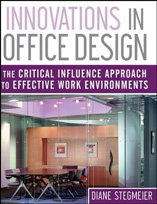Critical Influence™: Compensation
The role of compensation systems within an organization
 In the simplest terms, a compensation system refers to how employees are paid for the work they are contributing to an organization. It involves the monetary value, benefits, and rewards that workers receive from their employer.
In the simplest terms, a compensation system refers to how employees are paid for the work they are contributing to an organization. It involves the monetary value, benefits, and rewards that workers receive from their employer.
But more than being a process of compensating the workforce, it serves many other purposes such as attracting and retaining top talent, maintaining employee morale, and rewarding excellent performance. Compensation can even serve as a tool to encourage innovative behavior.
How employees are compensated greatly affects their willingness to be team players in a new collaborative work environment. Continue reading to see how your organization’s approach to compensation can have a huge impact on your workplace change initiative.

As part of the 15 Critical Influences™, this page on Compensation is integrated with actual content from the book Innovations in Office Design: The Critical Influence Approach to Effective Work Environments™ by SCG Founder Diane Stegmeier.
Compensation as a driving force towards workplace innovation
Perhaps one of the most overlooked influences on employee behavior and performance during workplace change is compensation. There are many influences to consider and maybe you, as a human resources or corporate real estate professional, have already recognized that the key to workplace innovation is encouraging teamwork and collaboration.
You may have thought that the answer to steering collaborative behavior is creating a workplace designed to encourage interactive workflow. And you are not wrong, but not entirely right, either. This initiative needs to be looked at from every possible angle.
If you’ve crossed everything off your checklist of factors to consider but still see barriers ahead, perhaps you need to take a closer look at how compensation can affect performance in your workplace.
More often than not, the factor hindering collaborative behavior is an outdated compensation system, one designed for individual performance. While this system is meant to motivate employees to exhibit commendable performance, it may also ignite a spirit of unhealthy competition that inhibits innovation when not paired with a team-based compensation plan.
Concerned with their personal income, individuals may shy away from collaboration out of fear that someone else may be compensated for their work and ideas. Employees’ light bulb moments are kept to themselves, thinking that sharing it with the team will divert the spotlight away from them and detract from their individual achievements.
For organizations aiming to drive workplace innovation, it is important to recognize these tell-tale signs of impediment and enhance the compensation program to encourage and reward teamwork in a more collaborative work environment.
A compensation plan that supports high team performance and collaborative workplaces
How can a compensation program be tailored to encourage teamwork in the workplace? First and foremost, it is important to acknowledge that the employees’ compensation package should be reflective of what is expected of them. But most companies fail to realize this.
In 2006, a survey conducted by Hudson Highland Group of 10,000 workers in the United States revealed the following:
- Forty-four percent U.S. workers surveyed say their bonus is based on individual performance only.
- Twenty-four percent indicate their bonus is dependent on the entire company’s performance.
- Only 11 percent of those surveyed say their bonus is based on team performance.
- Nineteen percent of these U.S. workers indicate their bonus is dependent on a combination of individual, company and/or team performance.
While 2006 is some time ago, ask yourself if those responses seem much different than the reality of today’s corporate business climate.
 Based on our observations, it is evident that there is still a disconnect between what employees are asked to do (which is to work as a team) and how they are paid. If an organization is gearing towards a teamwork-driven approach, a team-based element should be integrated into its compensation structure.
Based on our observations, it is evident that there is still a disconnect between what employees are asked to do (which is to work as a team) and how they are paid. If an organization is gearing towards a teamwork-driven approach, a team-based element should be integrated into its compensation structure.
According to University of Michigan’s John E. Tropman, effective compensation structures include more variables now than have typically been incorporated in the past. New approaches to paying employees for their contributions to their companies are changing the fundamental assumption that compensation is employer-driven, shifting to an employee-driven concept.
In his book titled The Compensation Solution: How to Develop an Employee-Driven Rewards System, he articulates the importance of including what he calls an “augmentation accelerant” as part of the total compensation equation to maximize the outputs of today’s workforce. This accelerant, such as a team incentive pay, must be legitimately earned by employees, and carries no guarantee of automatic payment by the organization.
In simpler terms, to encourage collaboration in the workplace, employee compensation packages should include an element, such as incentive pay or commissions, that team members can obtain once their goals as a team have been reached.
This is not to say that the organization should focus on a team-based program alone. Of course, both team and individual compensation and rewards should be addressed. This way, aside from growing individually, employees are also motivated to work as a team to reach a common goal. It is also worth noting that a compensation plan that rewards both individual and team efforts does not only foster teamwork but may also result in talent retention.
The impact and relation of compensation with the other Critical Influences™
In his book, Tropman also introduced an idea that resonates closely with the interrelatedness of the Critical Influences™. He warns of a “structural lag” found in many organizations which refers to new values put in place while the organizational practices lag behind.
For example, many employers attempt to lead change initiatives that shift the focus from individual results to team-based performance outcomes. Typically, collaboration-inspired physical spaces are designed and built, thinking that an open space plan is the only way to make interaction a constant behavior among the employees.
But if individuals are still paid only for their own efforts, barriers may still appear. An ideal physical workplace can only do so much without the presence of motivation.
A perfect example of considering several Critical Influences™ while leading workplace changes was shown in the U.S. federal government’s initiative called WorkPlace 20\20. It was launched in 2002 and was established to modernize work practices and environments at the federal level with an eye on the year 2020.
“Experts told us we should look at improving human productivity,” said Kevin Kampschroer, Director of Research and Expert Services for GSA’s Public Buildings Service, but he and his team came to understand that productivity was the wrong focus. The emphasis needed to shift to a more holistic perspective—at overall organizational effectiveness.
Shifting the emphasis from individual achievement to aggregate group performance reinforces the importance of keeping the Critical Influence System™ in mind, especially as it relates to organizational structure, business processes, compensation, performance management, knowledge management, and rewards and consequences.
The U.S. General Services Administration also put a remarkable idea into practice to improve their compensation system and reap great performance results. Kampschroer shared a powerful concept known as linking budgets to performance, used by GSA in a major change initiative.
According to him, this concept was applied by setting expectations for team performance and team behavior to determine cash rewards appropriate for the desired results. He further explains, “The idea was that we would pool all the possible individual bonuses people could get, and instead switch to rewarding the entire team. This approach to encouraging team performance won a CoreNet Global Innovation Award.”
GSA felt employees should realize how their individual roles support the achievement of their goals as a collaborative workforce. Certainly, tying financial rewards to workplace performance is a concept companies need to contemplate when considering making a change to the workplace.
Consulting services to help you integrate an effective compensation system in your change management plans
In need of expert guidance to make sure that you are considering all factors during a workplace change? Sometimes you don’t know what you don’t know. We’ll make sure nothing important is left off your change management checklist.
Stegmeier Consulting Group can also help align your approach to compensation with your innovation goals. Reach out to us and let us talk about the best ways you can leverage your existing plans to ensure success. The first step is easy! Fill out the form below and we will be in touch with you shortly.



